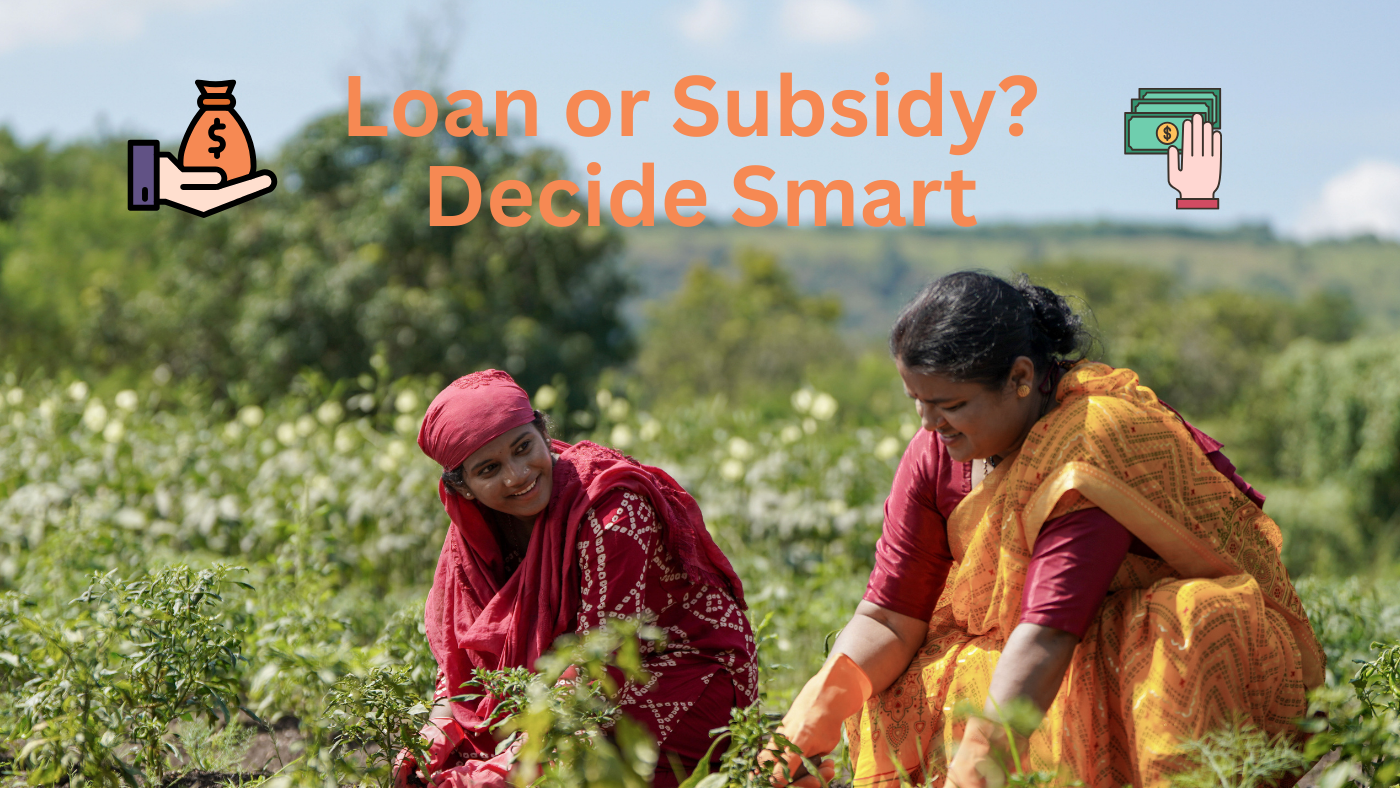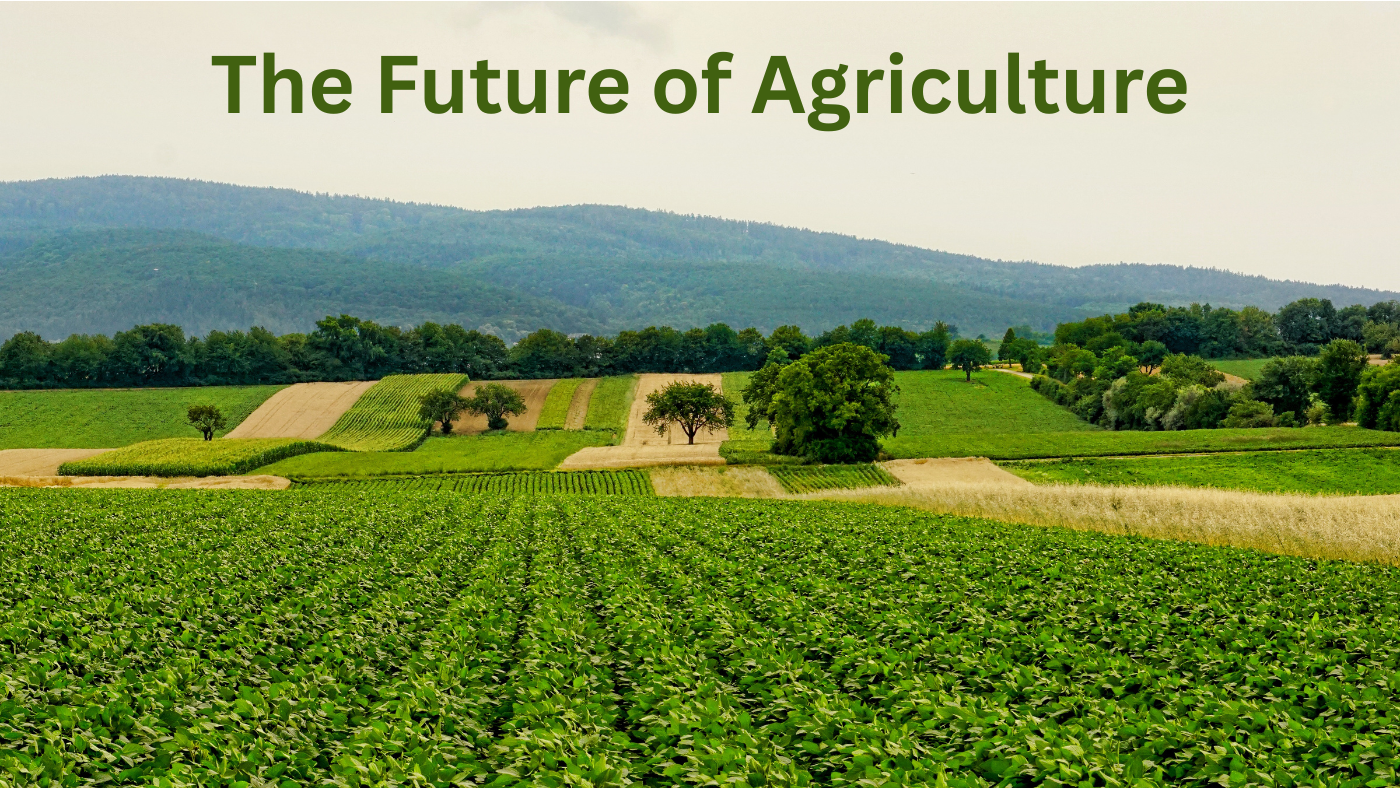Confused between taking a loan or waiting for a subsidy? In 2025, Indian farmers have more financial options than ever—but choosing the right one can make or break your farming season.
Farm loans offer quick access to funds for seeds, equipment, and irrigation, while government subsidies reduce costs on essentials like fertilizers, electricity, and insurance.
This practical guide breaks it down so you can decide what’s best for your crop, cash flow, and long-term goals.
- Which is faster: Subsidy or loan?
- What saves more money in the short and long term?
- Hidden conditions you must know before applying
- Best strategy: When to combine both for maximum benefit
🔍 Quick Comparison: Loan vs. Subsidy for Farmers
Understanding the difference between loans and subsidies can help farmers make smarter financial decisions. Here's a quick side-by-side comparison:
| Factor | Loan | Subsidy |
|---|---|---|
| Definition | Borrowed money to be repaid with interest | Financial support/grant that does not need to be repaid |
| Source | Banks, NBFCs, co-operatives | Government schemes, NGOs |
| Repayment | Mandatory, with interest | Not required |
| Best For | Urgent capital needs: buying equipment, seeds, land | Reducing cost of inputs: seeds, irrigation, machinery |
| Processing Time | Usually quick if documents are ready | Longer, requires application and approvals |
| Risk Level | High (liability to repay) | Low (no repayment burden) |
🌱 What is a Farm Loan and How Does It Work?
A farm loan is a financial credit facility provided by banks, NBFCs, or cooperative institutions to farmers for managing agricultural operations. These loans help cover essential expenses like:
- Purchasing seeds, fertilizers, and pesticides
- Buying or maintaining tractors, irrigation pumps, and farm tools
- Leasing or buying agricultural land
- Setting up irrigation or water supply systems
Farm loans are usually offered under various government-supported schemes like the Kisan Credit Card (KCC), which offer subsidized interest rates and flexible repayment terms.
📌 Example: A farmer borrows ₹2 lakh under the Kisan Credit Card (KCC) scheme at just 4% annual interest. If repaid on time, the farmer avoids penalties and gains continued access to low-interest credit.
Timely use of farm loans can help farmers invest in quality inputs, improve productivity, and boost income.
🧾 What is a Farm Subsidy and How Can Farmers Benefit?
A farm subsidy is a financial grant or support provided by the government to reduce the cost of agricultural inputs and encourage sustainable farming practices. These subsidies help farmers improve yield without taking on heavy financial burdens.
Common types of farm subsidies in India include:
- Fertilizer Subsidy: Reduces the cost of urea and other soil nutrients
- Seed and Pesticide Subsidy: Supports the purchase of quality seeds and crop protection
- Machinery Subsidy: Helps buy tractors, harvesters, and modern equipment
- Irrigation Equipment Subsidy: For tools like drip systems and solar pumps
- Crop Insurance Premium Subsidy: Covers a large portion of insurance costs under PMFBY
📌 Example: Under the PM-KUSUM scheme, farmers receive up to 60% subsidy on solar pumps used for irrigation—significantly reducing electricity or diesel expenses.
Subsidies play a crucial role in making farming affordable, especially for small and marginal farmers who need extra support to stay profitable.
🤔 Loan vs. Subsidy: Which is Better for Farmers?
There’s no one-size-fits-all answer. Choosing between a farm loan and a farm subsidy depends on your specific needs and financial situation. Here’s when each option works best:
✅ Choose a Loan When:
- You need urgent funds for big purchases like tractors, land, or equipment
- You qualify for low-interest loans such as the Kisan Credit Card (KCC) scheme
- You have a clear repayment plan and need working capital for farming operations
✅ Choose a Subsidy When:
- You want to lower the initial cost of farming tools, seeds, or infrastructure
- You can wait for application approval and processing time
- You are investing in sustainable farming methods like solar pumps or drip irrigation
💡 Pro Tip for Farmers:
👉 Use both smartly: Apply for subsidies to reduce your input costs, and take loans only when you have a solid repayment strategy in place.
🗺️ Where to Find Farm Subsidy and Loan Schemes?
Looking for reliable sources to apply for farm loans or subsidies? Here are trusted places and platforms where Indian farmers can find the latest schemes and financial support options:
- Visit your nearest Krishi Vigyan Kendra (KVK) for local assistance and guidance
- Contact your District Agriculture Office for scheme details and applications
- Check official government portals:
- pmkisan.gov.in – for Kisan Credit Card and other farmer benefits
- agricoop.gov.in – Ministry of Agriculture portal
- nabard.org – National Bank for Agriculture and Rural Development schemes
- Download and use the mKisan App for real-time updates on subsidies, loans, and agricultural advisories
📘 Use subsidies wisely and loans smartly for stronger, risk-free farming.
Understanding when to use subsidies and loans can transform your farming journey.
- Subsidies help lower upfront costs and encourage adoption of modern farming methods without financial burden.
- Loans provide the capital needed for bigger investments but require disciplined repayment.
- By balancing subsidies and loans wisely, farmers can maximize productivity while minimizing financial risks.
Make informed choices to grow your farm sustainably and secure a prosperous future.
🧠 FAQs: Farmers’ Common Questions on Loan vs. Subsidy
Understand key differences between farm loans and subsidies to make informed financial decisions.
✅ Yes. Many farmers combine loans to cover urgent costs and subsidies to reduce input expenses, especially for equipment and infrastructure.
🎯 Subsidies are safer for new farmers unsure of returns. Start small with government support schemes like PM-KISAN or agriculture startup grants.
✅ Yes! The government offers subsidies under schemes like Paramparagat Krishi Vikas Yojana (PKVY) for organic inputs and organic certification.
📅 Farm loans usually have flexible repayment periods based on crop cycles, with interest rates depending on the scheme (e.g., KCC loans start at 4%).
✔️ Yes, subsidies depend on specific government schemes with eligibility linked to farmer category, crop type, region, and scheme objectives.
🛠️ Yes, many schemes provide subsidies on machinery like tractors, solar pumps, and irrigation equipment to lower upfront costs.
⏳ Loan approvals usually take 7-14 days depending on the bank and documents submitted, with faster processing for schemes like KCC.
🐄 Yes, loans cover allied sectors such as dairy, poultry, fisheries, and beekeeping under schemes like KCC.
👩🌾 Absolutely! Women farmers are encouraged and eligible to apply for all major loan and subsidy schemes.
🌐 Visit local agriculture offices, Krishi Vigyan Kendras, official websites like pmkisan.gov.in, agricoop.gov.in, and use the mKisan mobile app for updates.



